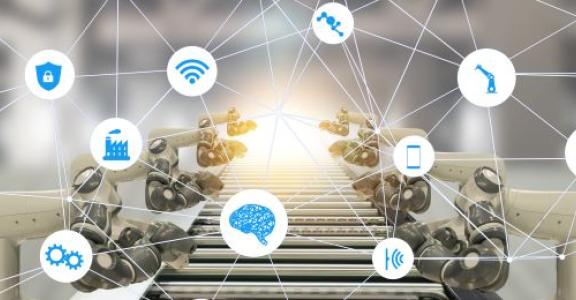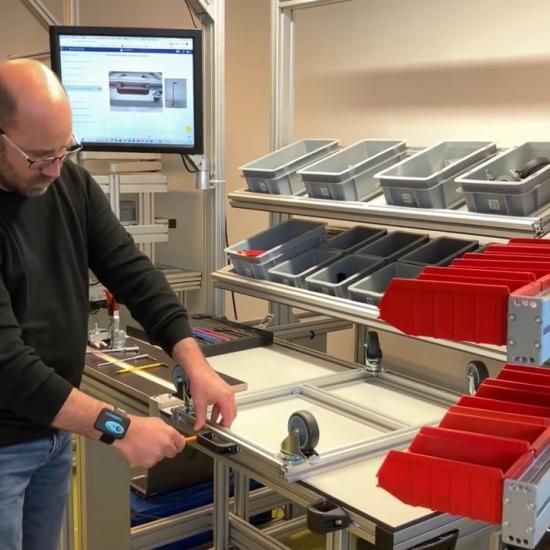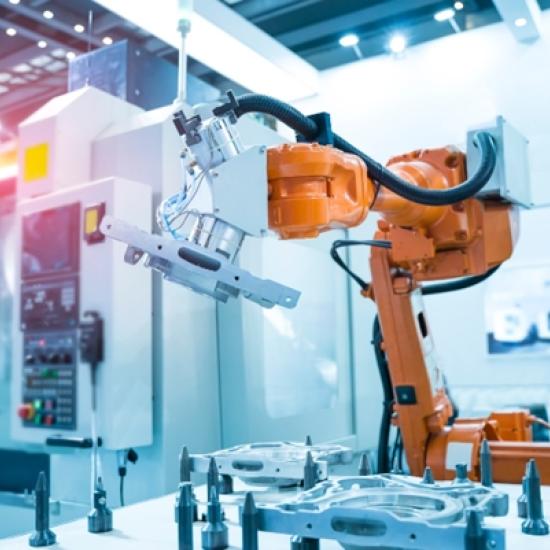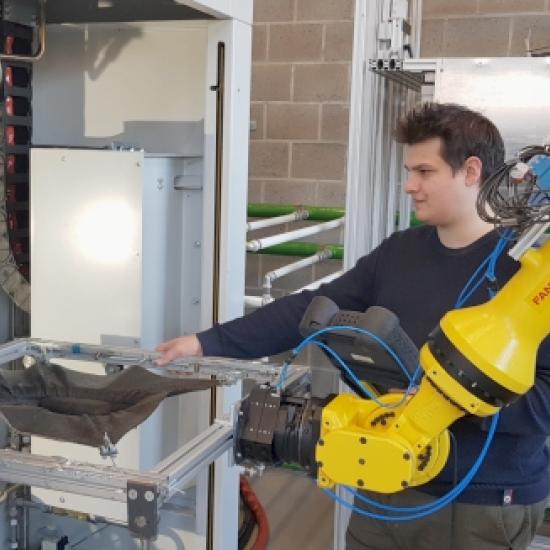Industry 4.0 is built around the exchange of information between machines and higher-level systems. Connected machines and far-reaching digitisation ensure that manufacturing companies can make their production lines more flexible, secure and autonomous. For machine builders, connected machines offer the potential to develop digitally supported services.
For many companies, it is still very unclear what the requirements are for a connected machine and what it could do for their business. At EMO 2019, the leading trade fair for metalworking in Hanover, connecting machines was one of the main topics.
Machine builders: from focusing on connectivity to becoming a pioneer
More and more machine builders are offering ‘Industry 4.0’ solutions. Some already provide an interface to their machines via open standards. But not all machine builders follow this approach. Some, often larger, machine builders offer their own interface to exchange information with their applications and those of third parties. If that is the case users will have to develop the further connection of the machine either in-house or with the help of external parties. Others offer only a basic option to connect the machine.
Manufacturers: transforming connectivity into productivity gains
The available technologies allow manufacturing companies to evolve towards a transparent production: they know what is going on in the production and why, and these insights can be used to implement specific improvements. The machines in manufacturing companies generate a multitude of data. However, in order to achieve a direct impact with this digitization, the available information must be used intelligently, so that the right production-organisational choices can be made. The diversity in connection methods of the different (old and new) machines is still a barrier for many manufacturing companies.
There are already a number of integrators who can work this out for a specific application. But the economic benefit of possible applications is still unclear for many manufacturing companies. An efficient way to quickly evaluate a number of possibilities could therefore be interesting.
MTConnect and OPC UA as dominant standards
There are several open standards that are increasingly being used by machine builders. The most commonly used standards are MTConnect and OPC UA, but these standards are still evolving too.
- MTConnect, a US-driven standard that allows process information to be retrieved unambiguously from numerically controlled machine tools and exchanged with software applications for monitoring and data analysis. MTConnect only allows for reading machine data and offers a limited, generic dataset for machines. The advantage of the standard is that the interpretation of the data is also unambiguously determined for a certain group of machines.
- OPC UA (Unified Architecture) from the OPC Foundation is a machine-to-machine communication protocol for industrial automation. OPC UA provides a generic architecture for a secure connection of machines and reliable data exchange in industrial automation environments. OPC UA offers quite an extensive set of possibilities. However, due to the lack of a common data model, machine builders implement this standard each in their own way. This complicates the interoperability between different machines.
UMATI focus theme on the EMO is still in development
VDW, the German association of machine tool manufacturers, is therefore committed to a common data model for machine tools based on OPC UA: Umati (Universal machine tool interface). This standard is still under development. The official publication and first implementations are expected in 2020. The UMATI showcase at the EMO fair showed that Umati enables machines from different manufacturers to be connected to the customer’s IT systems in a secure, transparent and simple way. A limited set of parameters from the standard was demonstrated by participating companies to monitor the OEE (Overall Equipment Effectiveness) on different machines.
Sirris monitors developments in connected machines development
In the context of the 4.0 Made Real program, Sirris is investigating the possibilities of connecting machines and is monitoring the existing standards. Sirris advises in the selection of the appropriate architecture to link machine data to the higher-level systems. Both manufacturers and machine builders are supported in the selection and implementation for connecting machines.
If you have any questions about connecting machines, please contact us.
(Source picture : https://www.dreamstime.com)




